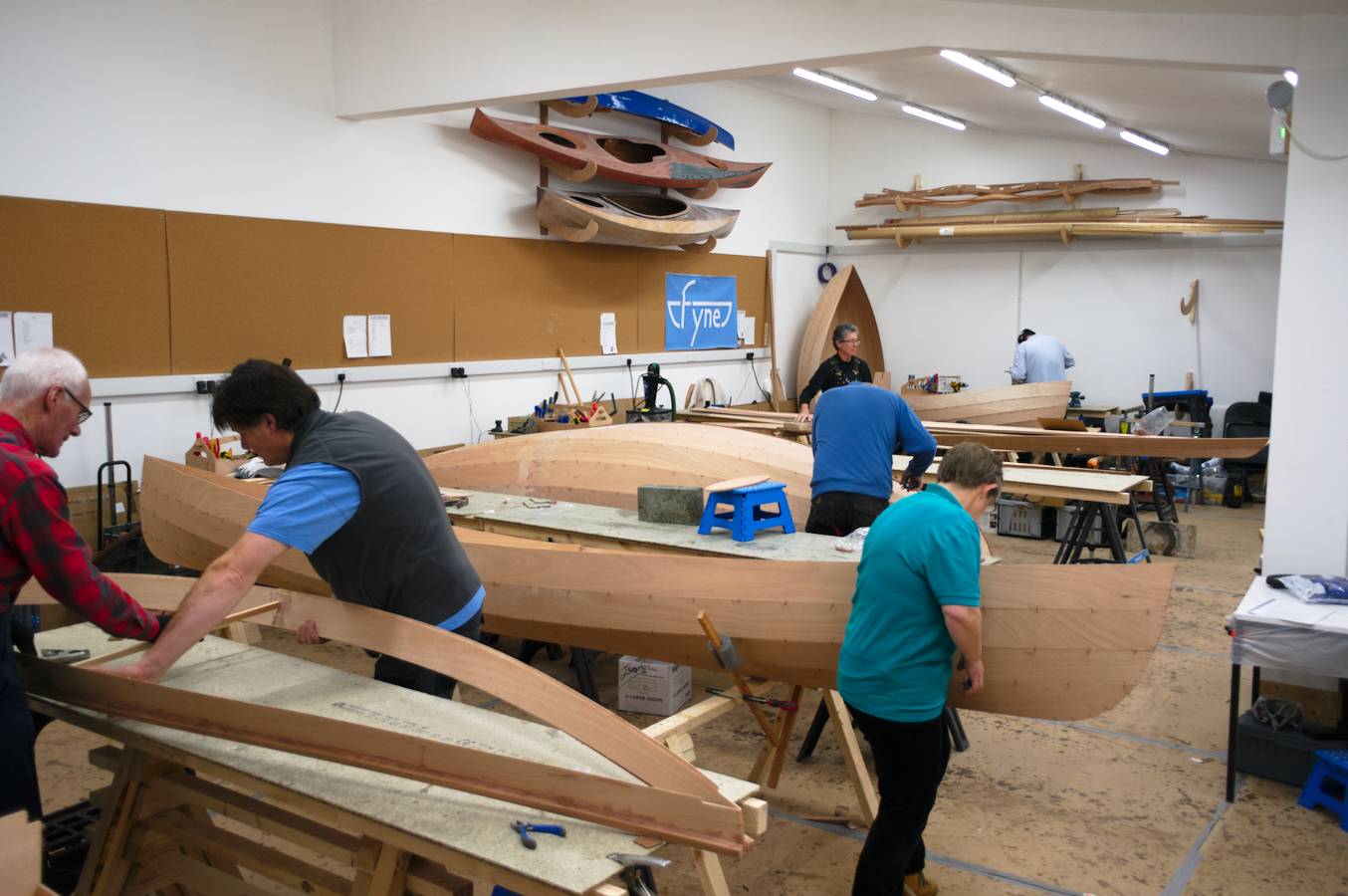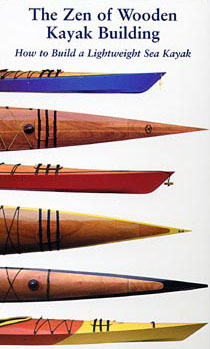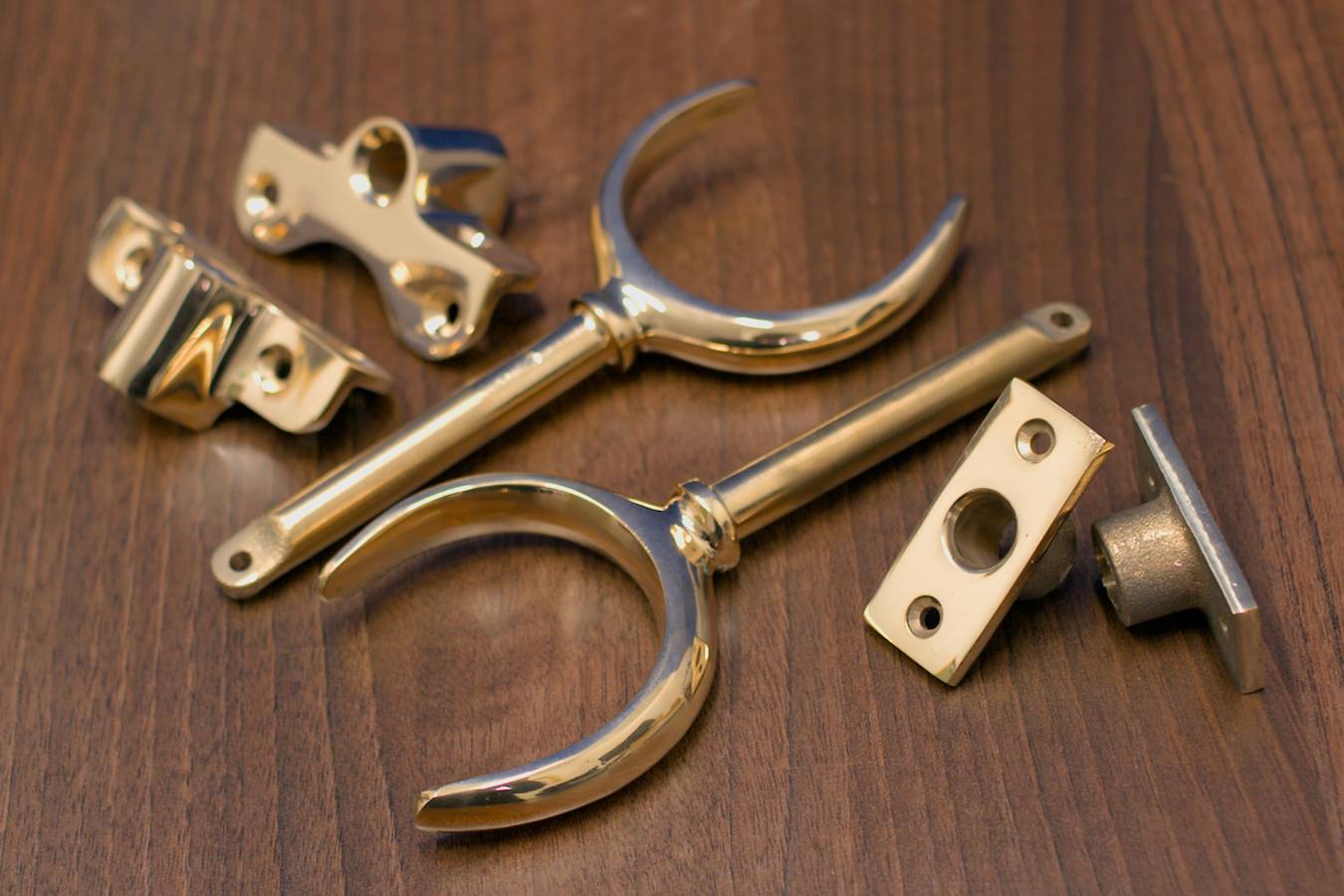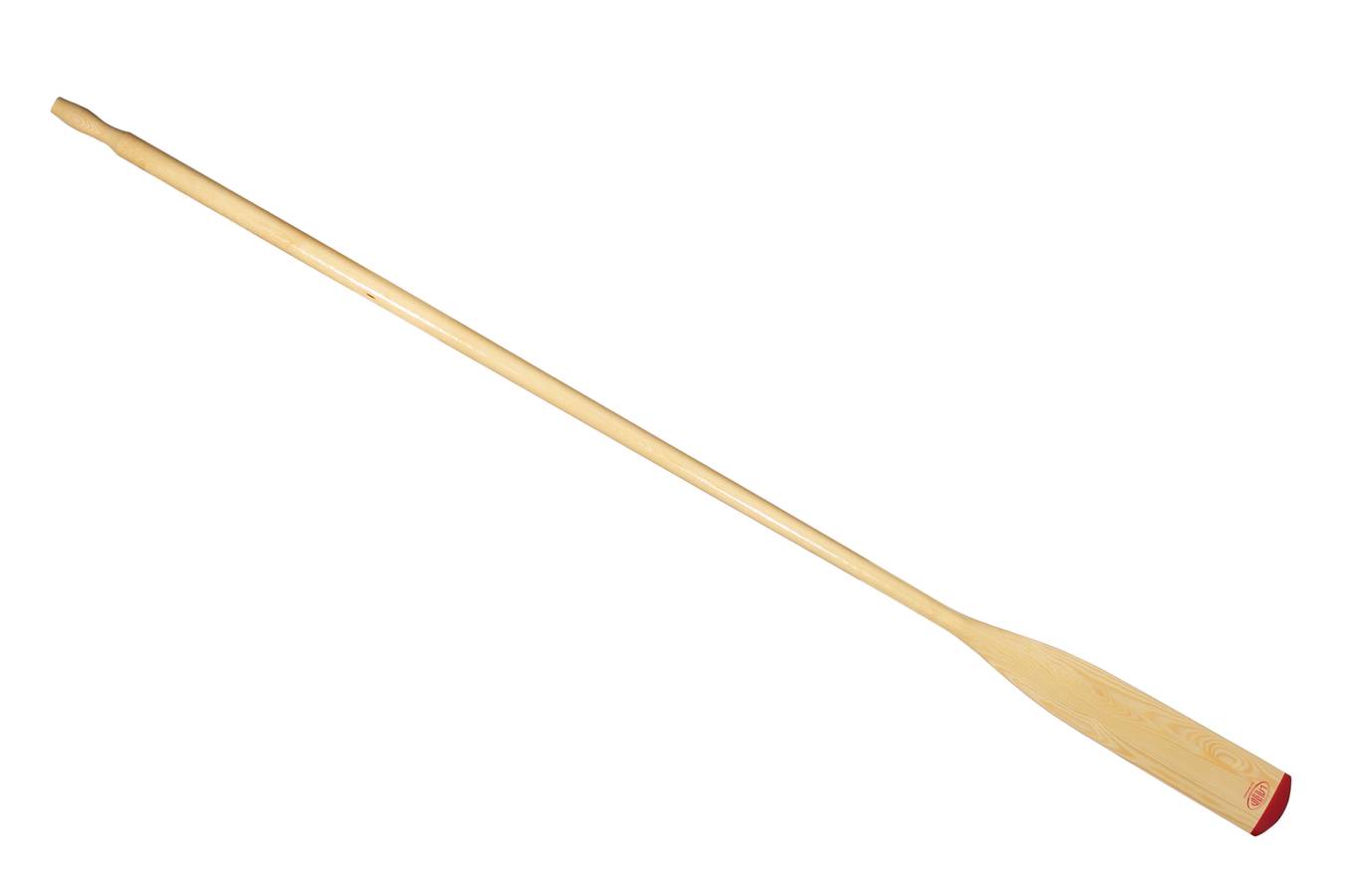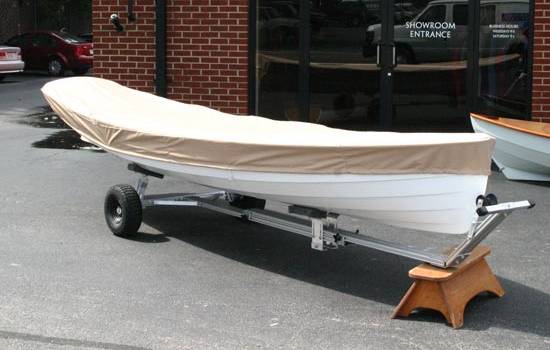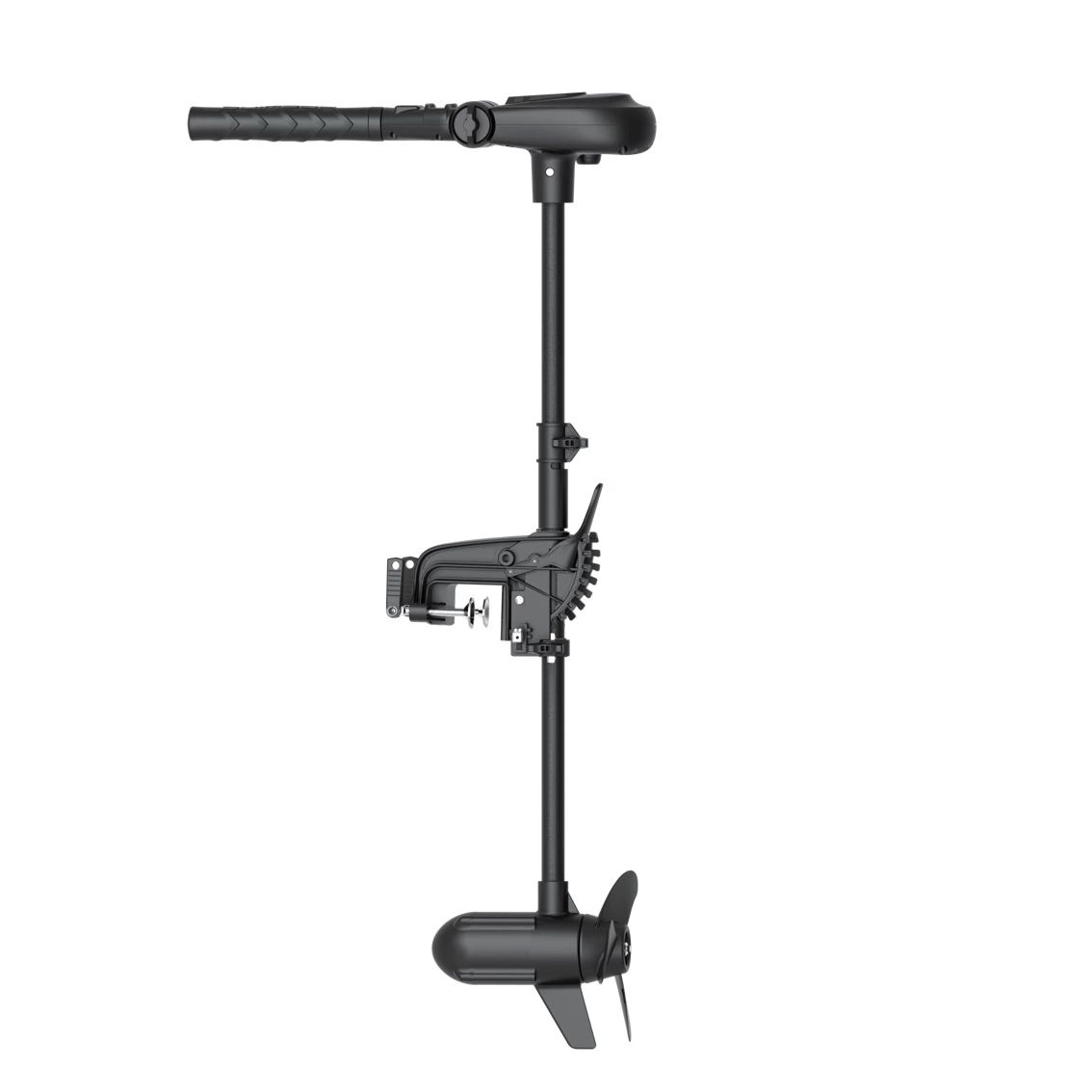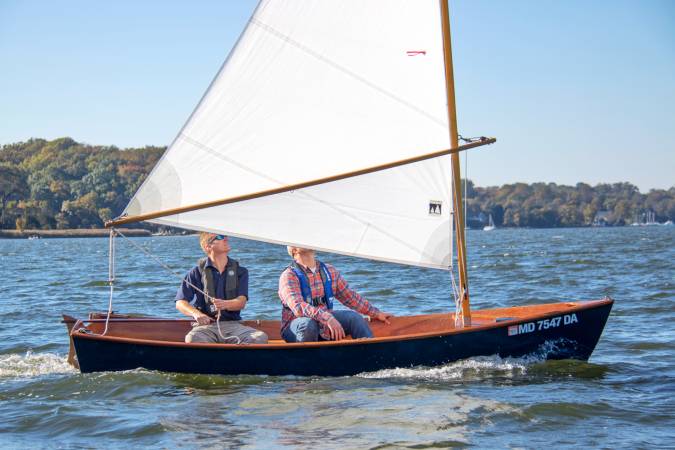

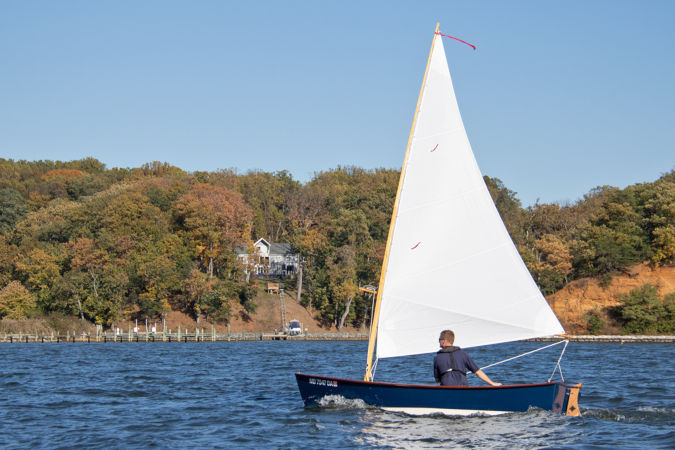
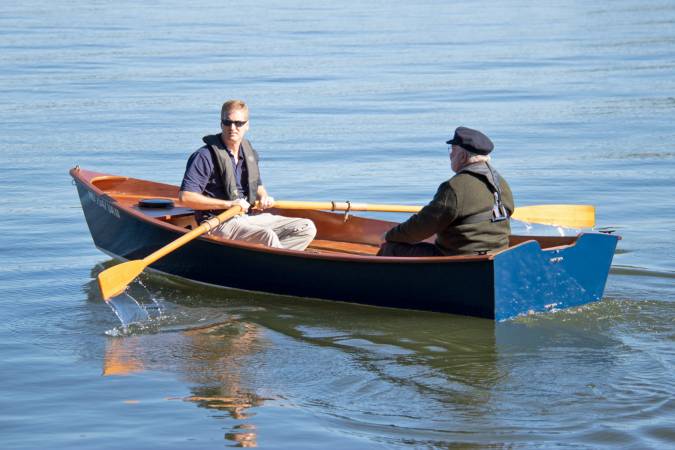
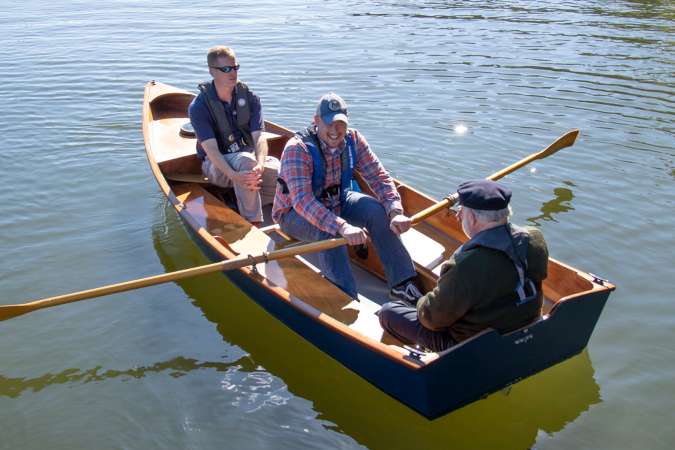
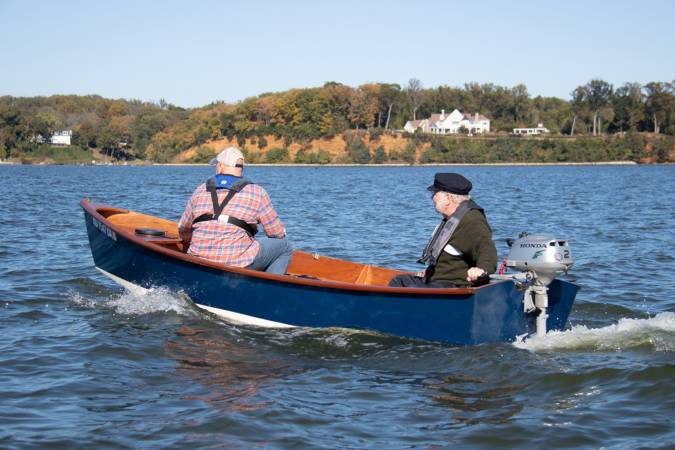






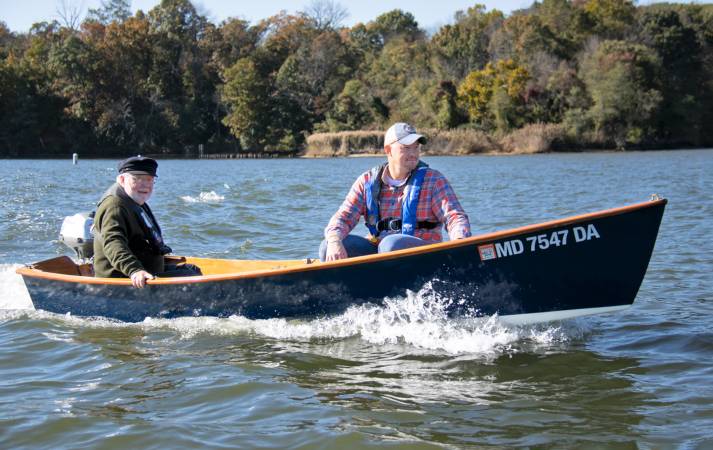
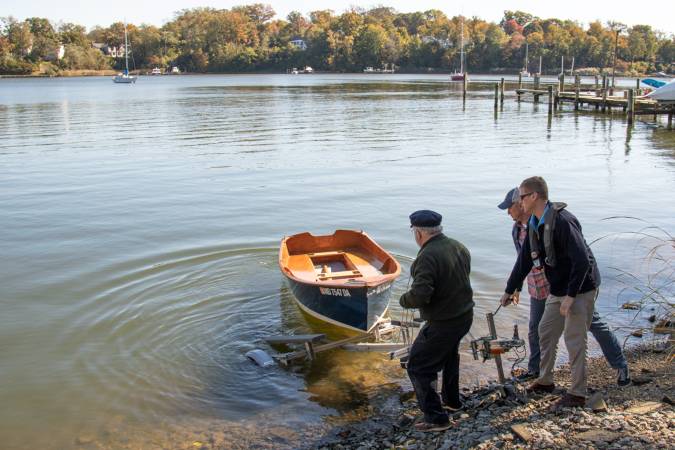
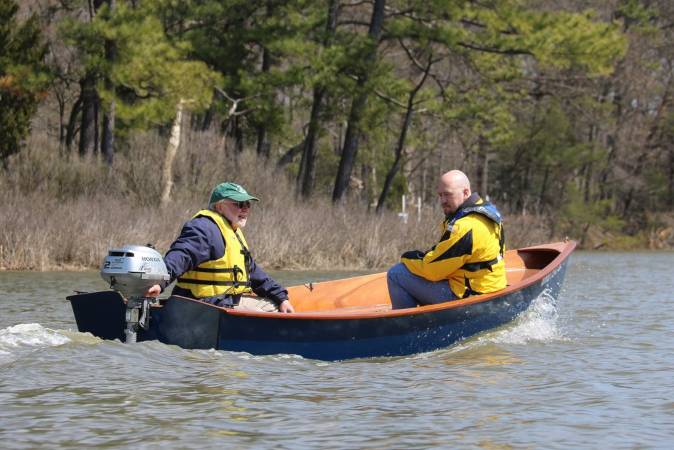
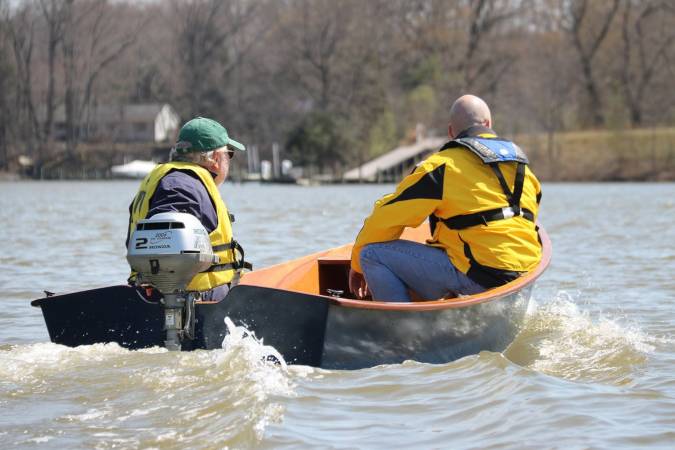
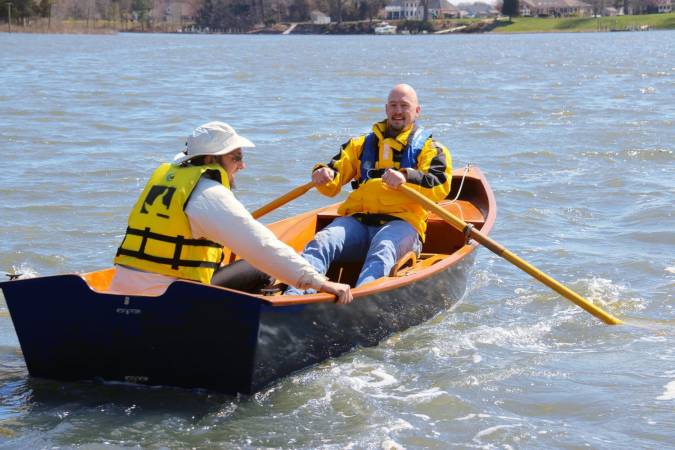
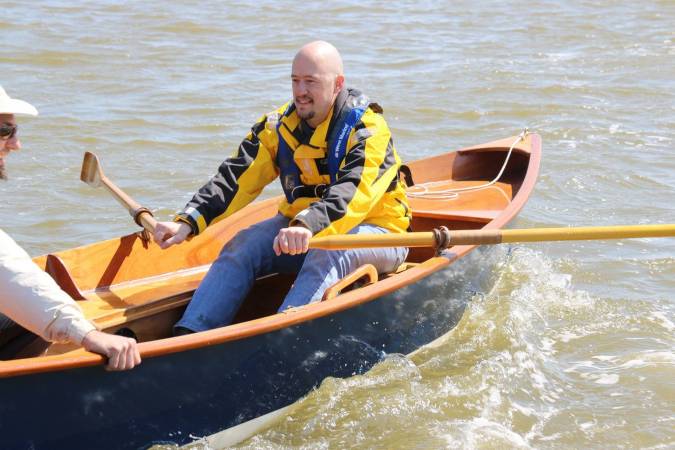
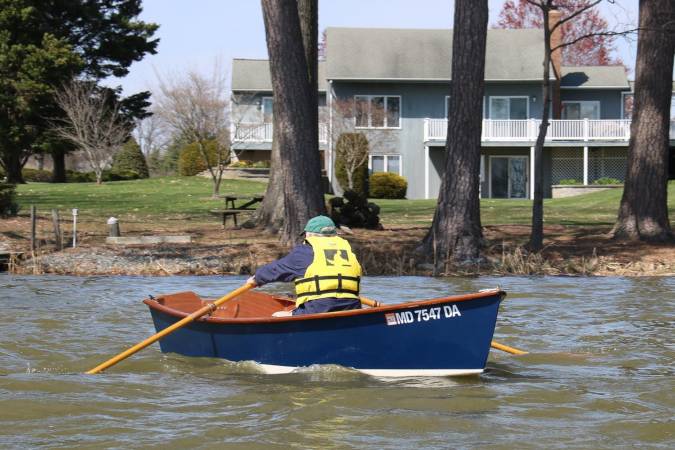
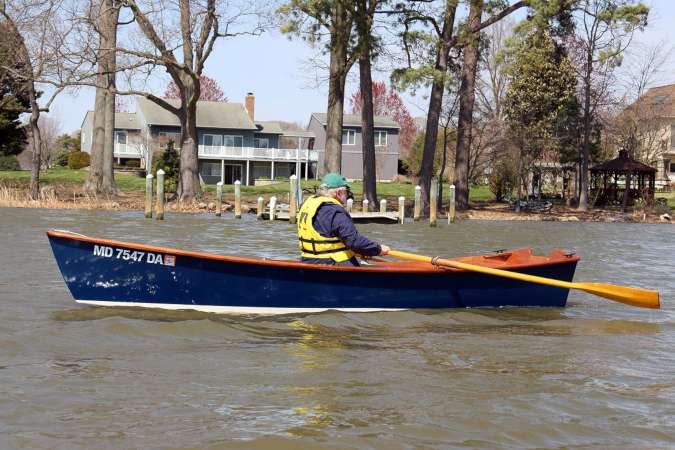
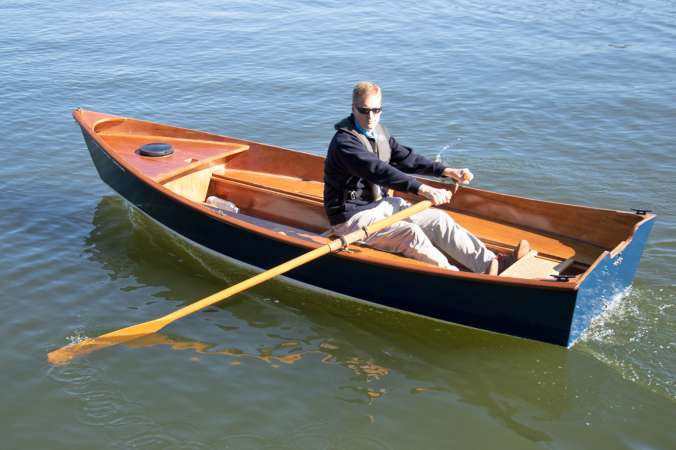
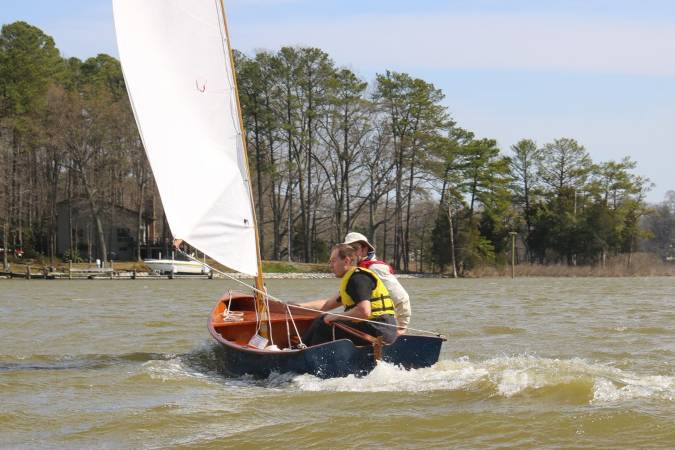
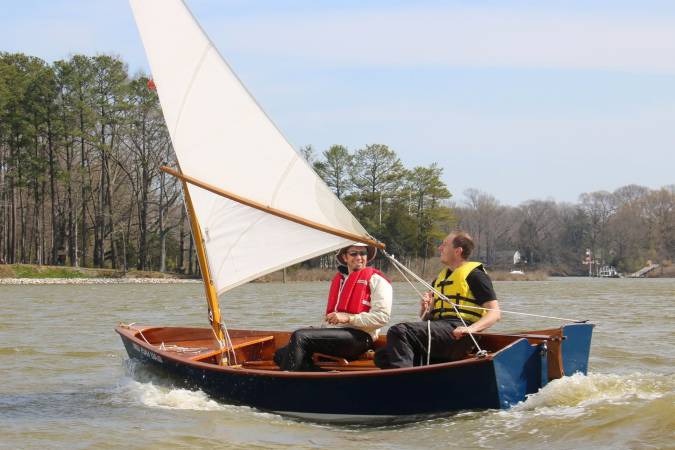
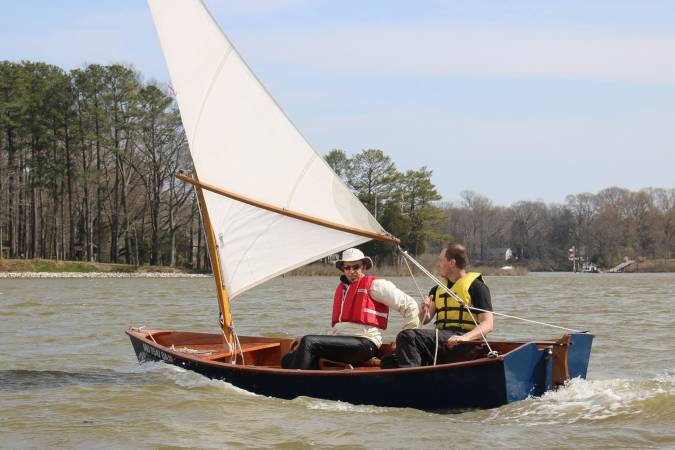

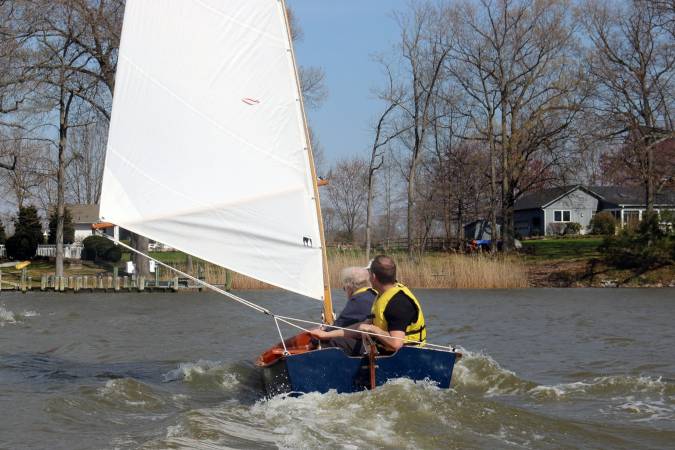
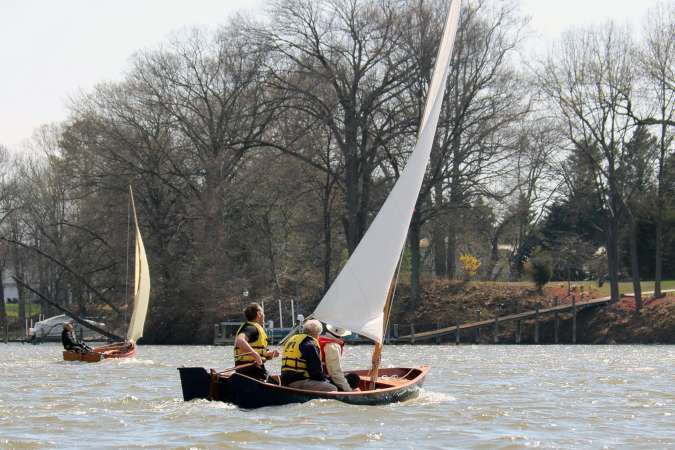
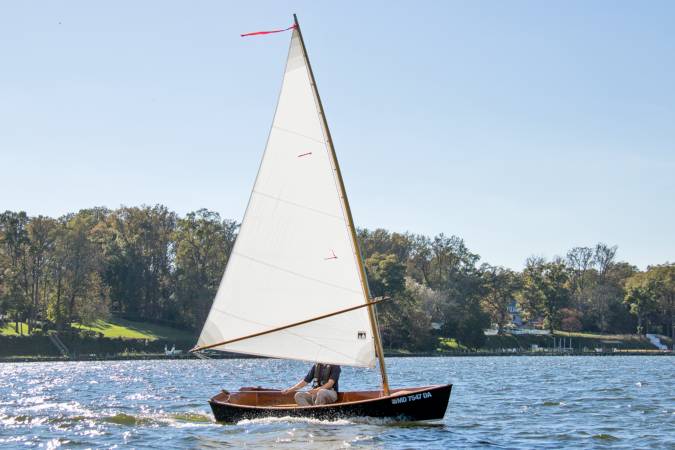
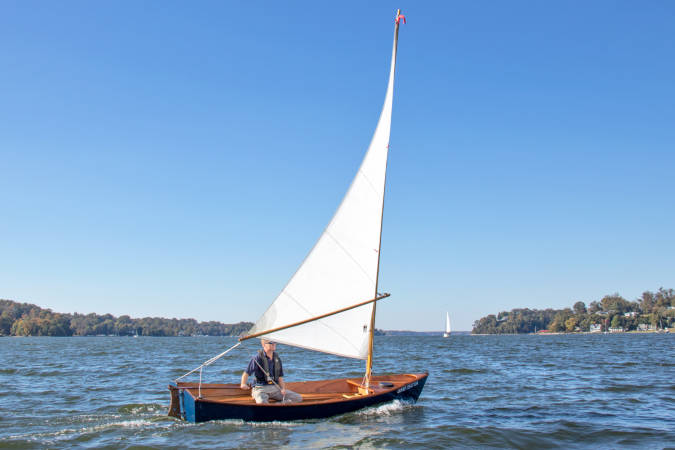
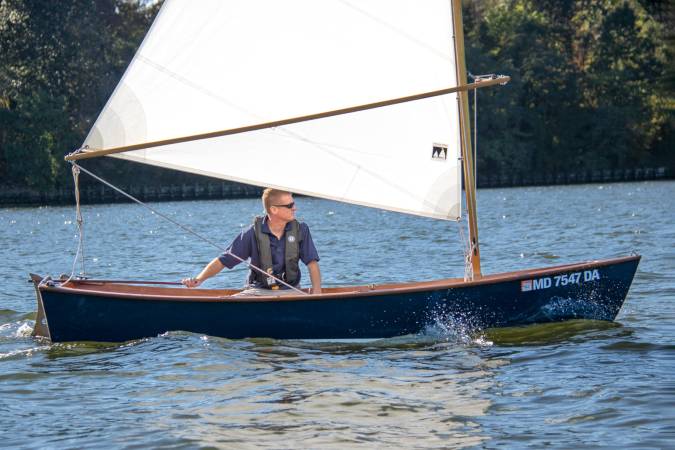
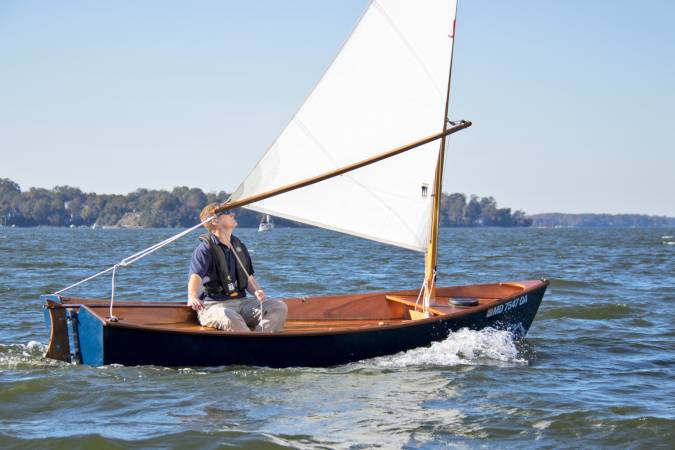
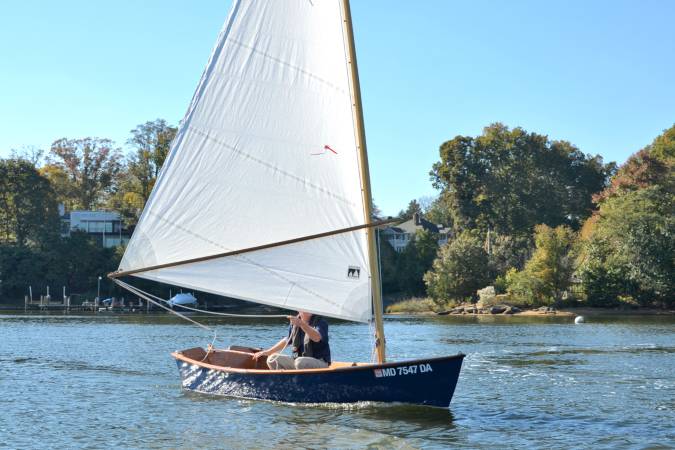
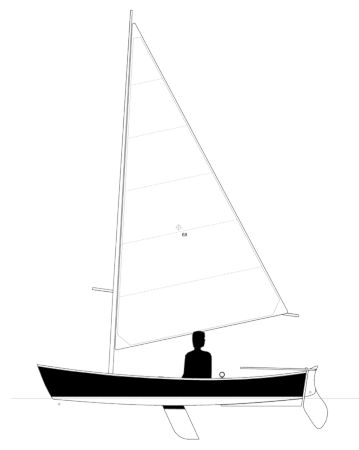
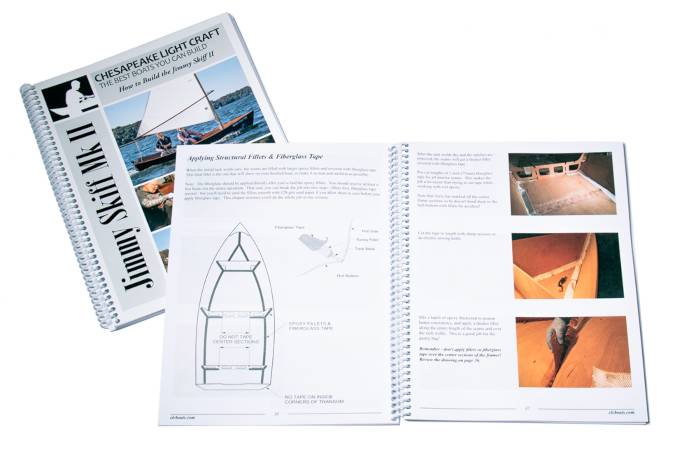
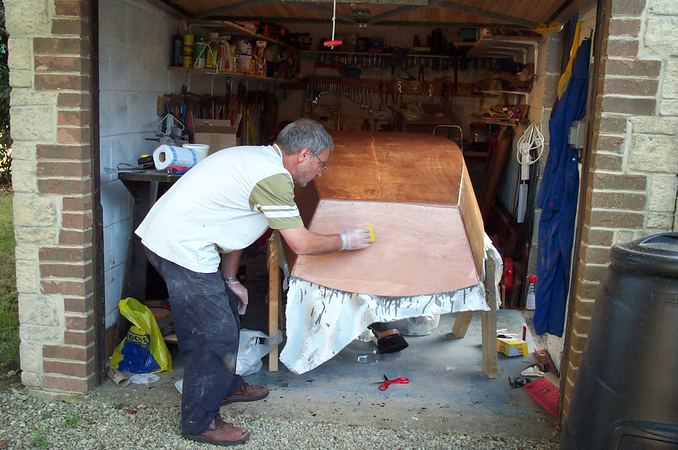
Product Description
The Jimmy Skiff II is a stable, lightweight rowing and sailing boat that also handles well under motor. This is an easily-built modern adaptation of an age-old design. The Skiff sails and motors as well as it rows and can accommodate a family of four; use it for fishing, day sailing, sail training or just for family fun on the water.
The Jimmy Skiff design is derived from the rowing and sailing skiffs once common on the Chesapeake Bay. Before the advent of the outboard motor, these flat-bottomed boats were used for crabbing, fishing, transporting goods and enjoying summer evenings with a friend. This skiff is named ‘jimmy’ after the Chesapeake slang for a male blue crab.
Proper rowing and sailing skiffs are extraordinarily rare these days with most flat-bottomed skiffs designed solely for outboard motors. It is easy to forget what a pleasure it is to spend an afternoon in a handsome, easily-driven rowing skiff, a boat that glides effortlessly with each stroke without dragging its transom. Don't be deceived by the ample beam and stability; this boat rows well enough to cover miles in a day, whether it's to reach your fishing grounds or just to enjoy an afternoon on the water.
The original Jimmy Skiff kit has remained popular since its launch in 1998. For its twentieth anniversary, designer John C. Harris crafted this clean-sheet redesign, the Jimmy Skiff II. The prototype was launched in 2017 and underwent 18 months of testing before being released in kit form.
The Jimmy Skiff II has a quite a bit larger sailing rig than the original boat and I find it even more fun to sail than the original.
John C. Harris, designer
Although the Jimmy Skiff II is the same length as its predecessor, and only a couple of inches wider, the Mk II is a stiffer boat with a greater load-carrying capacity. The taller mast and 68 sq ft (6.32 m²) leg-o-mutton sail make the new sailing rig 15% larger and more powerful than the Mk I.
The interior of the boat now features comfortable bench seats so you don't have to sit on the floor while sailing. Underneath the seats are side tanks for buoyancy, making the boat easy to right after a capsize. The daggerboard case is offset from the centreline and built into the starboard seat to maintain a long, open cockpit.
In addition, the hull shape has been optimised with slightly less rocker, a fuller bow and a stronger transom designed to take a small outboard motor (2-3 HP is plenty).
The Jimmy Skiff II will do around 6 knots with a 2-3 HP motor, with two adults and a child aboard – any more power is unnecessary and potentially dangerous. The transom is designed for a short-shaft (15″ or 38 cm) outboard motor. Up to 18 kg of engine weight is allowed, but the boat will move more efficiently with less weight hanging on the transom. An electric trolling motor is another excellent option.
I purchased the Skiff [Mk I] from Fyne Boats in late October 2002, having never built a boat before and possessing average DIY skills. By Christmas the boat and sail kit were built, by February it was painted and varnished, then once the sail had arrived it was launched in March/April. Hand tools were appropriate for most of the build which was completed in evenings and the odd weekend. Telephone advice was always freely available from Fyne boats. No parts were missing and all accurately cut.
In the last 8 years the boat has been used extensively by our family for sailing and fishing. It sails and rows very well, but will also works with an electric outboard. One of the high points was sailing in Loch Sunart with our two boys accompanied by porpoises. A great family boat for sheltered waters.
Andrew H.
The updated computer-cut kits feature all the latest innovations to make construction quick and easy for first-timers. All parts are precision-cut to fit perfectly using slot-together frames where possible. The long hull panels are joined to length using pre-cut puzzle joints that fit together without risk of misalignment and are pre-drilled for stitch-and-glue construction.
It will take about 120 hours to build a rowing/motoring version of the boat or 150 hours for a completely outfitted sailing version.
The Jimmy Skiff II rows beautifully, sails fast on all points and handles great with a small outboard motor. Those looking for a versatile utility skiff will be hard-pressed to find a better design. The basic kit includes everything you need to outfit her as a rowing boat or motorboat and the sailing upgrade can be added retrospectively to complete the sailing version.
The Jimmy Skiff II has a payload of 525 lb (238 kg). When sailing, payload is limited to 500 lb (227 kg).
7½ ft oars are recommended for this boat.
Read a review of the Jimmy Skiff II design in Wooden Boat magazine (issue 272, Jan-Feb 2020).
The rowing hull base kit includes:
- Pre-cut plywood panels with pre-cut joints and pre-drilled tie holes
- Pre-cut plywood breast hook and quarter knees
- Solid wooden outwales, seat carlins and seat stringers
- Epoxy resin and activator
- Epoxy fillers
- Copper ties
- Woven glass fabric
- Woven glass tape
- A pair of silicon bronze rowlocks and sockets
- Daggerboard case
- Comprehensive full-colour building manual
- Free technical support from a competent builder
The daggerboard slot is pre-cut in the starboard seat and the mast partner hole is pre-cut in the deck for upgrading to sailing at a later date. If you don't intend to sail the boat, we can also provide these parts without the holes cut, on request.
Sailing upgrade
This upgrade can be retrospectively fitted and it turns the Skiff hull into an able sailing boat. The unstayed mast is simple to install and remove. Any rig can be fitted but the leg o mutton one usually fitted is simple to work and has a boom that is well above the heads of the crew. Please note that the base kit (or a completed hull) is needed in addition to the sailing upgrade.
Under sail, the Skiff exhibits perfect balance and impeccable sailing manners in light or fresh breezes. The ‘leg-o-mutton’ sail is quick to set up and strike, with only the simplest controls, making the Jimmy Skiff a perfect boat for beginning sailors. The traditional sprit boom means that the crew will never get whacked in the head during a surprise jibe.
The daggerboard case is built-in to the base hull kit, so the sailing upgrade can be added at any time, without complex modification.
The upgrade includes:
- Sail
- Sail track
- Mast blank
- Sprit boom blank
- Mast step
- Daggerboard blank
- Rudder blank
- Tiller blank
- Blocks and cleats
The sail option does not include the warp – it is in the rope package.
Sailing rope package
The sailing rope package contains all of the line and sail lacing needed to get you sailing once your boat is complete.
Plans and manual
These plans and manual contain sufficient information on the cutting of the panels to make it possible to build the boat from scratch. Builders working from a kit do not need the plans.
The plans include full-size templates for every part in the boat, including parts for the sailing rig option. The manual includes hundreds of step-by-step colour photos and diagrams covering the entire build process, including scarfing plywood.
Study manual
This is intended for pre-build study or to help with the decision to purchase. This is the comprehensive full-colour manual that accompanies the kit; reading it will help you decide whether or not you can build the boat. It describes all of the techniques that will be used during the build and also a step by step guide to construction. It contains a photograph or diagram of every step.
If, later, you decide to purchase the kit the cost of this printed manual will be deducted from the kit price.
The manual does not contain the cutting instructions so it is not possible to build the boat from scratch using only this.
PDF study manual
The construction manual for the boat is also available as a PDF download. After credit card authorisation a download link for the manual will be sent to the email address put on the order form.
PDF study plans
These study plans are intended to give you an overview of the construction of the boat. They are in PDF format that can be viewed using Adobe Reader. There are two pages and they measure 279 × 216 mm (11″ × 8½″). They can be printed for carrying around.
After credit card authorisation a download link for the study plans will be sent to the email address put on the order form.


